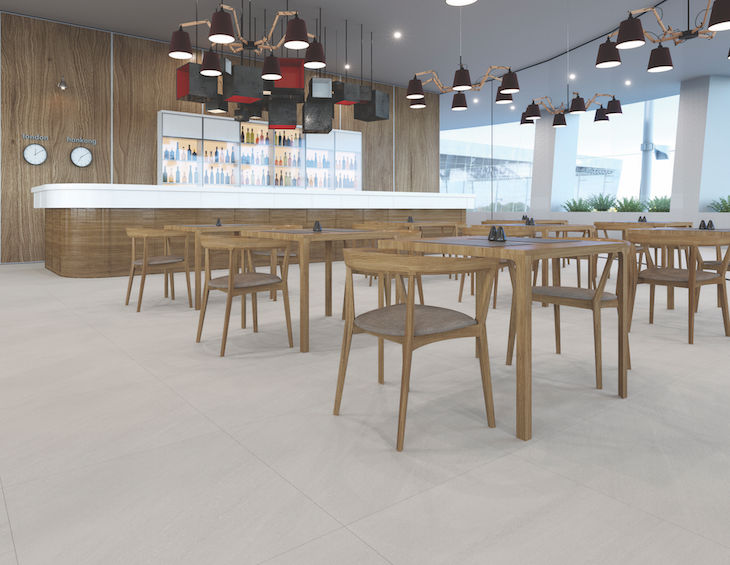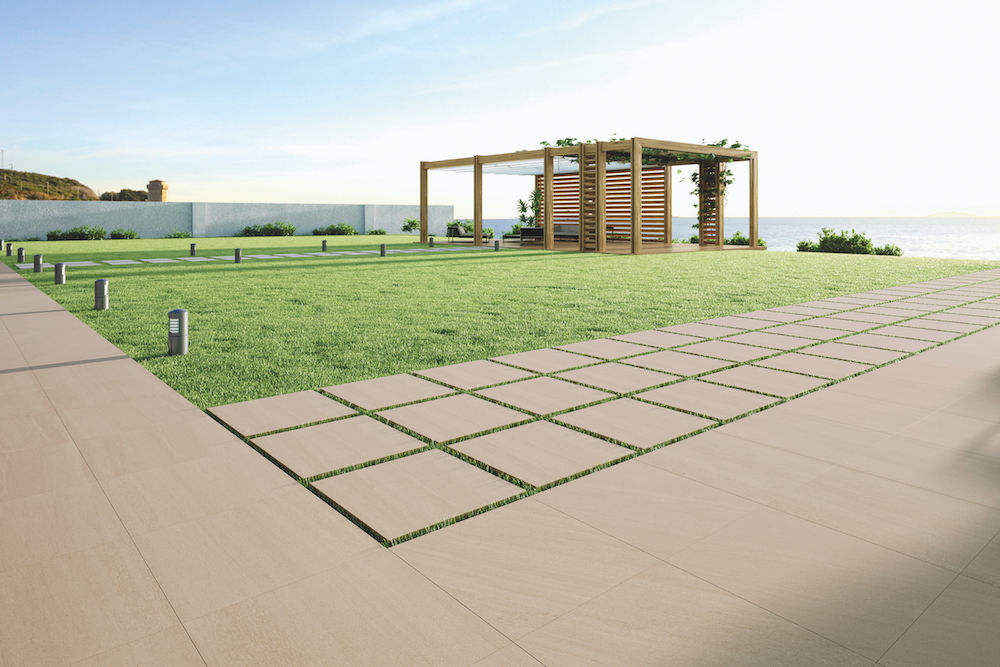Specifications Sector Manager for CTD Architectural Tiles, Andrew Sadler, explains how to practically and safely specify non-slip tiles…
From lobbies and front of house to hotel bathrooms and bar areas, there are a number of practical considerations to consider when specifying floor tiles within the hospitality sector; one of the most important of which is slip resistance. Ensuring a tile provides the appropriate level of slip resistance whilst meeting both the practical and aesthetic requirements for a project is of paramount importance to the specifier, so what do they need to consider?

Firstly, it is important to understand that the slip resistance of a floor depends upon many factors, for instance: whether it is wet or dry when in use, the roughness of the surface, whether the floor finish comes into regular contact with liquids or other contaminants, how the floor will wear over time and if there a suitable cleaning and maintenance schedule in place. Each of these factors will affect the performance of the tile and therefore must be carefully considered when making a final flooring choice for a hotel.

Image credit: CTD Architectural Tiles
If we look at the bathroom environments then based on recommendations from the HSE, the correct specification should use floor finishes that achieve Pendulum TRL (slider 55) of 36+ for wet barefoot areas, to achieve a low slip potential environment. CTD Architectural Tiles suggests using a structured tile with Pendulum TRL (slider 55) of 40+ for wet barefoot areas as good practice. This is due to possible slight variations from tile to tile and possible cleaning and maintenance issues. The Tile Finder on the CTD Architectural website allows the specifier to be able to filter product ranges along these lines.
The table below illustrates how the HSE categorises the results from the Pendulum test:
| Classification | PTV |
| High slip potential | 0 – 24 |
| Moderate slip potential | 25-35 |
| Low slip potential | 36+ |
Surface Micro-roughness
CTD Architectural offers test results for another method for establishing slip resistance – surface micro-roughness. Whilst this method is subject to ongoing research and subsequently is not a subject of a British Standard like the Pendulum Test, when the data is used to supplement pendulum data, research has shown it gives a good indication of slipperiness in water contaminated environments.
Maintaining slip resistance of floor finishes
The two main factors that affect the ongoing slip resistance performance of a floor finish are wear resistance and surface contaminants. In respect of wear resistance, this can be addressed by recommending unglazed porcelain tiles to the client. This is opposed to a glazed floor tile where the glazed surface finish is subject to wearing away over time. Correctly specified and installed unglazed porcelain tiles would be expected to last the lifetime of the building. The slip resistant characteristics of an unglazed porcelain tile are maintained with the implementation of a suitable cleaning regime.
Surface contaminants
Areas subject to expected surface contaminants should incorporate the use of slip resistant floor tiles. The degree of slip resistance changes with the predicted contaminant – for example water as a contaminant has less of an effect on slip resistance than gear oil or margarine. There is proven relationship between slip resistance and cleanliness, specifying an appropriate post-installation cleaning regime is crucial in maintaining the performance and look of the original design.
For more information on the CTD Architectural Tiles portfolio and team, please see www.ctdarchitecturaltiles.co.uk
Main image credit: CTD Architectural Tiles




